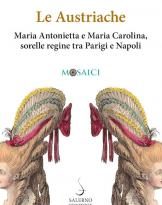Antonio Gibelli
Ed. Rizzoli, Milan 2014
pagg.399
The author, professor of contemporary history at the University of Genoa, traces a fresco of Italy during the Great War "placing above all the emphasis on collective moods, on the lived experience of fighters and civilians, men and women, adults and children, in a word of the entire Italian population involved in that experience in a total manner and out of it deeply transformed."
What was the first, great collective experience of Italians, began the 24 May 1915. Unlike the Second World War, which involved all of Italy, this conflict affected only a limited part of it. And, besides that "a biological event of unheard-of proportions"Because"for about four years, in some territories of the European continent, millions of men had systematically devoted themselves to killing other men through the use of modern technologies, millions of bodies, mostly young and in good health, had been transformed into rotting corpses", It was"a total war only in the sense that all economic, social and intellectual energies were mobilized to support their weight, and everyone's life received a very strong stamp from the ongoing war."Set in Italy by a minority, it was initially conducted with the ferocious repressive discipline of General Cadorna. The initial neutrality - in fact, Italy entered the 10 war months after the beginning of the conflict - was well seen both by the large peasant masses that represented the largest social share of the country, and by the working masses. In favor of the intervention, however, there was the small and middle bourgeoisie and, subsequently, the emerging groups of Italian capitalism, as well as most of the intellectuals, from Marinetti to D'Annunzio, from Papini to Prezzolini. The Futurists saw in the war the triumph of rumor and dynamism. The irredentists saw it as a completion of the Risorgimento, which would have happened with the liberation of the territories that awaited their redemption: Trentino with Trento and Istria with Trieste.
About a sixth of the population, equivalent to 5.900.000 of men, was enlisted between the 1915 and the 1918 in the army, which passed from about one million men in the 1915 to over two million in the 1917-1918, with the 45% made up of peasants who also paid the largest tribute of blood. Instead, the officers' corps passed from around 15.000 on the eve of the 22.000 war during the conflict. The real increase, however, was suffered by the department of the complementary officers who passed from about 20.000 in the 1914 to almost 156.000 in the 1918 and that came to form the backbone of the troop.
Everyone found themselves fighting for a homeland in which, however, the degree of identification of the Italian masses, on the eve of the conflict, was still modest. "The weakness of national identity is reflected in linguistic phenomena, in those concerning schooling and literacy."
It was a war, above all of position, as the 12 battles of the Isonzo demonstrate, where, despite the efforts, neither went forward or backward. Many were the renitents (470.000 the denunciations at the beginning of the war) and the deserters. Others, in order not to go to the front, resorted to self-harm and to the simulation of diseases which, when it came to mental illness, were very difficult to expose.
The war brought an increase in literacy. "There were numerous infantrymen who learned to write from 1915 to 1918. Together with the importance of being able to read and write, the soldiers discovered, at their expense, the modernity of new technologies, the power of industry, the coercive force and the presence of the state in their lives."
In addition to the soldiers there was the internal front which was above all an industrial and workers front, made up mainly of women and industrial workers, and which led to an extraordinary increase in the number of working class workers including young people. The role of the woman changed considerably as "the enormous consumption of human energy determined by the war, the growing need for labor in all sectors and especially in those of war production, provoked in fact a kind of invasion of the female field not only in the family but in the most diverse activities . The women became a tramway, a railway worker, a postman, a bank employee and a public administration, workers in munitions factories."
The human factor, however, was not held in high regard by General Cadorna: "For him, the war had to be conducted all from above. He decided the strategies at the table, he thought that they should be simply applied, whatever the cost."And so, during the 1916 and the first half of the 1917, a series of Italian actions were resolved in terrible slaughterhouses, without decisive results, until, in the night between 24 and 25 October 1917, to the defeat of Caporetto , "the most important episode of the war on the Italian front, namely the sudden breakthrough of the front and the consequent spread in depth of the Austro-German troops on the national territory."
Caporetto proved that "the war had been an imposition of minorities on the majority of the country and especially on the moods of the lower classes, but especially the latter had continued to remain foreign, to suffer as a violence, not to identify at all with its reasons."For the first time, from war of position to war of movement, with all that involved the rapid movement of a very large number of men (one million soldiers and 400.000 civilian refugees), with relative carriaggi and household goods, on the few roads that led to the Tagliamento. "According to official data, the overall losses of the route were counted in about 10.000 dead, 30.000 injured, 40.000 stragglers, just under 300.000 prisoners."
In retrospect, the story of Caporetto was re-read, by some, in a positive light as it was seen as a "salutary boost that would have awakened the energies of the country and the army, strengthened the political unity, made finally of the war a factor of cohesion and of the national belonging a feeling wider and deeper."A year later, the war ended with the victory of the Entente and, therefore, of Italy. A victory, ours, not at all obvious, on the contrary, "the victorious counteroffensive was in a sense a surprise."It was also due to the change of command: General Cadorna was replaced by General Diaz, who had a greater attention to the needs of the troops avoiding their frantic employment.
Many, during the Great War, were the dead, many were those who remained nameless. "Anonymity, which had been the dominant quality of the trench warfare, was also the prevailing character of death", So much so that it reached the unknown soldier, as an object of posthumous cumulative worship. "The figure of the unknown soldier had tried to give a collective name to a body that no longer had a name."Then came the Parks of Remembrance, where avenues and gardens were destined to welcome as many trees as the fallen of their respective places. But even more widespread was the initiative to display headstones and erect monuments to victims throughout Italy. A permanent memory that of the Great War so much so that "the thunderclap of the 1914 still makes its distant rumble."
Gianlorenzo Capano












